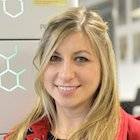PhD Student and Guest Researcher at the German Aerospace Center (DLR e.V.)


Office: Roberts Building, Room 222, UCL
Email: m.schmidt.17@ucl.ac.uk
Headlines:
PhD Candidate.
Guest Researcher, Aerospace Microbiology Research Group, Radiation Biology, Institute of Aerospace Medicine, German Aerospace Center (DLR e.V.).
UCL Space Domain Ambassador.
Selected Honours & Awards:
Best Research Image & People’s Choice Award, Research Images as Art / Art Images as Research Competition, London, UK, 2019 & 2021.
35th DLR Parabolic Flight Campaign, DLR, Paderborn, Germany, 2020.
Best 3-Minute Thesis & 2nd Best 3-Minute Thesis, Chemical Engineering, London, UK, 2018 & 2019.
Best Oral Presentation & 2nd best Gravity Related Image, 26th ELGRA & 14th ITTW, Granada, Spain, 2019.
Best Poster, ECI Nature-Inspired Engineering Conference, Cetraro, Italy, 2019 & Best Poster, Industrial Advisory Board Poster Competition, London, UK, 2019.
Exhibitions:
Biennale Architettura 2021, Venice & online, Italy, 2021.
Research Images as Art / Art Images as Research, UCL, London, UK, 2019 & 2021 online.
La Fabrique Du Vivant, Centre Pompidou, Paris, France, 2019.
Biodesign Here Now, Open Cell, London, UK, 2018.
Collapse: Climate, Cities & Cultures, New York University, NYC, US, 2018.
Research:
Water is one of the grand challenges of life. People on Earth, especially in extreme environments, still lack access to it. Even at the forefront of discoveries, for current and future space exploration, water recycling, for which among others the relative humidity from cabin air is absorbed, treated, and re-used, is inadequate. Additionally, if high levels of moisture remain in local areas, organisms such as bacteria and fungi start to disperse and proliferate, threatening the material integrity and posing risks to astronauts’ health. Therefore, finding new and sustainable approaches is crucial. Malica’s interdisciplinary research focuses on the development of a multi-functional surface that consists of nature-inspired microstructures fabricated by a high-resolution 3D microprinting technique. These structures transport water and microbes passively, where they can be collected and filtered. This phenomenon has been demonstrated in simulations, ground-based experiments, and in microgravity experiments on the 35th DLR parabolic flight campaign. The surface could further shield against ionizing radiation, which is becoming one of the biggest risks to astronauts’ health beyond Earth’s magnetic field and will be tested at a later stage. Aim of this project is to enhance people’s health and life in the built environment and to improve life support systems for current spacecraft and for future missions to Moon, Mars, and beyond.
Education:
MArch, Architecture, University of Edinburgh, Edinburgh, UK (2016)
BSc, Architecture, Bauhaus University, Weimar, Germany (2013)
 Close
Close

